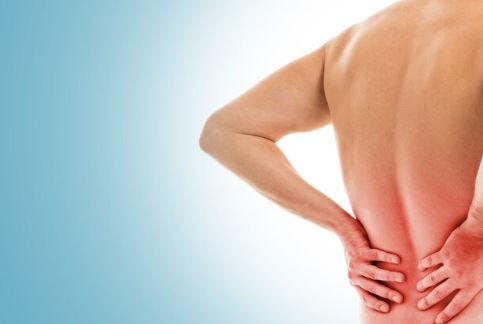Smoking and Your Joint, Ligament, and Tendon Health
Smoking increases your risk of degenerative disc disease, disc herniations, disc bulges, and increased complications post-surgery. I’ve worked with many back surgeons over the years, and most will not recommend back surgery for smokers, unless they quit smoking.
Smoking, like a bad diet, creates oxidative stress and lowers the body's ability to heal tissue after it is injured. In a recent systematic review on smokers and healing, the authors concluded:
Smokers also experienced a greater need for surgery and greater postoperative wound healing complications, increased pain perception, delay in recovery and decreased satisfaction after receiving surgery. (Smoking and degenerative spinal disease: A systematic review - PMC (nih.gov))
Smokers also have more issues with tendon tearing (2x’s more likely than non-smokers), poor healing after surgery, and poor response to rehab post-surgery.
Smokers are 1.5 times more likely to suffer overuse injuries, such as bursitis or tendonitis, than nonsmokers. Smokers are also more likely to suffer traumatic injuries, such as sprains or fractures. Smoking is also associated with a higher risk of low back pain and rheumatoid arthritis. (Smoking and Musculoskeletal Health - OrthoInfo - AAOS)
People who vape probably think they are in the clear, but the studies are coming out about how harmful vaping and the higher amounts of nicotine are for the body and tendons. Nicotine weakens and slows the ability of tendons to heal.
In conclusion, most smokers know they need to quit. It’s quite obvious it’s very detrimental to all aspects of your health.
Please Share This Post to Help Others
Diabetes, Prediabetes, and High Blood Sugar
It’s been shown in numerous studies that diabetes type-2 patients have an increased risk of disc herniations in the cervical and lumbar spines. It’s been shown that type-2 diabetics have an increased incidence of lumbar stenosis. Type-2 diabetics also show decreased joint mobility and poor tendon and ligament health, due to advanced glycation end-products.
All of the above problems are due to uncontrolled blood sugar levels. High blood sugar cause sugars to get deposited in your tendons, cartilage, and discs and makes them weaker. So, if you find that you’re not healing as fast as you should, you should look at your diet and think about cutting out all of the processed foods that contain sugar.
Stress and Poor Healing
We all deal with stress. Life has hastened to a fast pace the last few decades. The pandemic has seemed to add fuel to the fire for stress in our lives. People who worked 45 hours pre-pandemic now work 50 hours per week. Inflation has created tighter family budgets. Isolation and lack of relationships has escalated further post-pandemic, due to people being comfortable with working from home and communications through social media.
All of the above create a hectic, isolated, worn-out lifestyle.
We could go on and on with all that’s going on in this world, but there’s not much we can control in the world around us, beyond our own physical actions and thoughts.
Constant mental stress creates a heightened fight-or-flight response by your body. This heightened response is great for when you need to flee a wild animal chasing you. But it’s not normal to have this response daily, all day long. This response creates a constant release of cortisol.
Increased cortisol reduces your body’s ability to release anti-inflammatory cytokines. The result is that your body is very slow to heal your injured musculoskeletal problem.
In future articles, we will give you tips, lifestyle changes, and supplements that have been proven to reduce cortisol and stress.
Poor Sleep
Sleep is very important for the healing process. Poor sleep is linked with poor glucose control, increased cortisol, and lack of motivation to exercise.
You should aim for 7-9 hours of sleep per night. You should establish a nightly routine of going to bed at the same time each night and waking up at the same time each morning (even on the weekends). Getting up and exposing yourself to sunshine first thing in the morning is a great way to reset your circadian rhythm (I know it’s winter here at the moment, so we’ll address how to get that light in the morning with a special light you can buy on Amazon).
Supplements can help assist with getting you to sleep and staying asleep. My personal favorites are melatonin (time released 1.5 mg-3 mg), magnesium bisglycinate powder (200 mg), glycine (3 g), and ashwagandha as needed. I would recommend trying one at a time to see how you respond to each one, but always check with your physician to make sure they are safe for you to take.
Poor Diet
This is not always obvious to many people, but a poor diet throws fuel on the inflammatory fire when it comes to pain. I’ve covered in previous posts about following an anti-inflammatory diet. Keep it simple and stick to it 90% of the time and you’ll notice a difference. The diet basics are the following:
Lack of Daily Variable Movement
Daily variable movement is key to keeping your body healthy. I like to keep it simple with my patients. If you sit all day, get up every half hour and walk around. If you stand all day long, try to sit for a few minutes every half hour. If you do the same repetitive movement with your right hand all day, try to switch to the other hand the next day.
I’d also like to add in that everyone (no matter your age) should try to walk 30 minutes per day. If you struggle with chronic low back pain, I recommend working up to two 30-minute walks per day. Walking is one of the best therapeutic exercises for the low back (and neck). It may not burn a lot of calories, but it has been shown to help reduce blood sugar and reduce cortisol.
You Keep “Picking the Scab” on a Daily Basis
I love this analogy. If you keep doing the same movement or posture every day, then your condition will heal very slowly or not heal at all.
The best example is a lumbar disc that has a bulge. Most lumbar disc bulges are irritated and made worse by flexing the spine. Many patients think they are helping their low back pain by stretching it (toe touches, yoga, stretching in the morning). All of the above create spine flexion and/or rotation which squeezes hard on the disc and creates pressure that makes the bulge worse.
The same idea applies to any other area of the body. If you're struggling with slow healing or chronic pain, you need to identify “what is picking the scab” on you on a daily basis. Only a skilled clinician can help you find these movements that you’re doing on a daily basis. It’s best to journal if you’ve been dealing with issues for a long time.
What’s difficult for patients, is that many chronic conditions are set off by movements done the day before or days before. Some people are in tune with their body and know when they “picked the scab”, but most people are oblivious to their poor postures and daily habits that pick the scab on their MSK pain on a daily basis.





